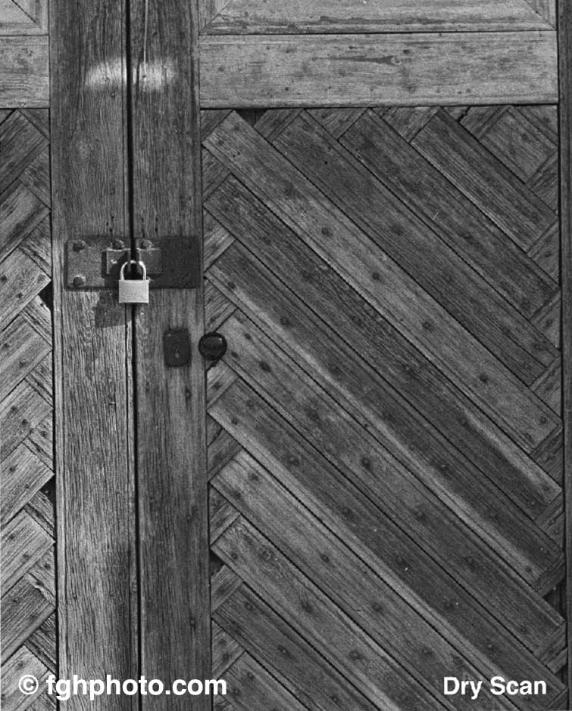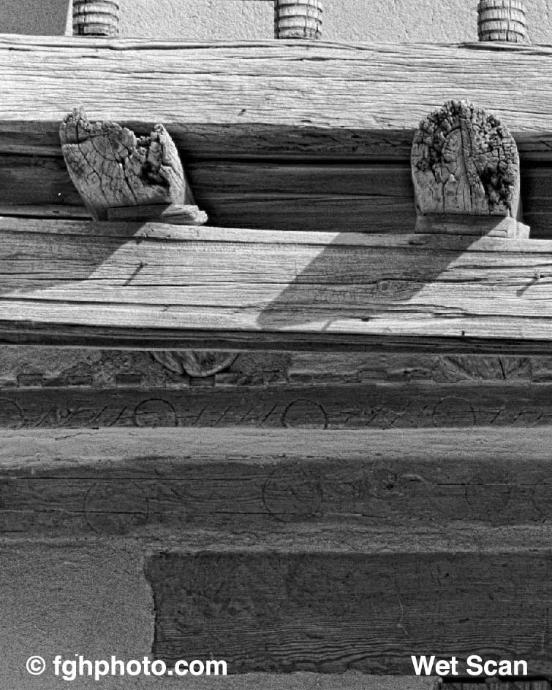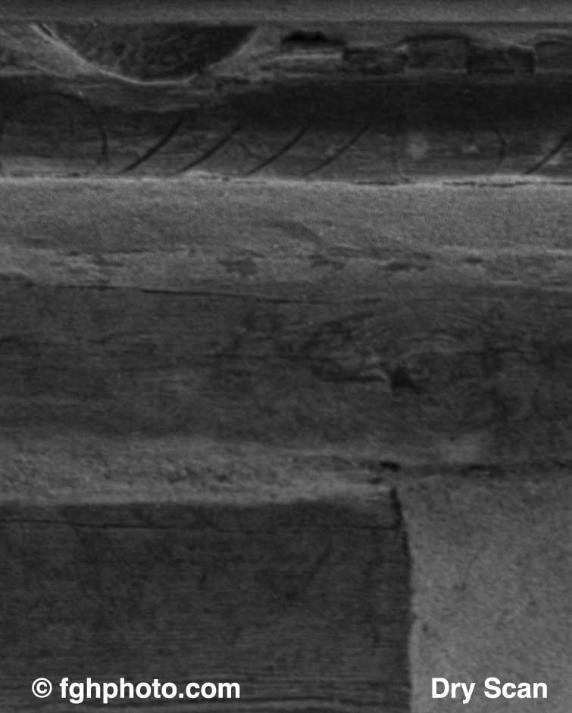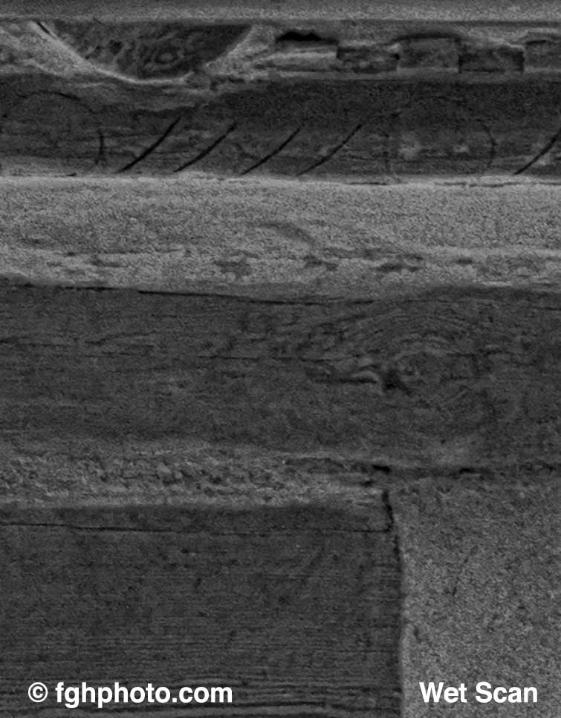





| These Scans were part of a study undertaken by Mr.Fred Halvorson aimed at defining the differences between conventional Dry scanning and fluid scanning using the ScanScience kits for the Nikon 8000/9000. The much higher resolution and contrast of the fluid scans is quite evident. The resolution of the Nikon scanners 8000/9000 is nominally 4000 dpi. That being so, the resolution of the fluid scans is considerably greater, at least 8000 dpi? Notice the much higher resolution and definition of detail around the knot in SET 1. and on the block of wood below the knot. Photographers go to great trouble to extract every nuance in the image by utilizing the Zone System, fluid scanning is the complimentary technique which delivers the Zone system to its fullest. In fact it is fluid scanning that delivers the Zone System, and without it, its full benefits are not attainable. Looking carefully at the door detail in SET 2 it is quite evident that fluid scanning technology is incremental to the lens and scanner quality by a significant margin. In addition, the dynamic range of the fluid scans is considerably superior: the whites are whiter and the blacks blacker. This can be seen in the top fringe of SET 1, and in the white around the whole section of white areas at the top of SET 3. Also in SET 4 the whites are much brighter in the fluid scan and its detail better defined. Of great importance is that the level detail in the shadows is markedly greater as for example in the black fringe just above the carved designs in SET 1. Look carefully at this scans and see the degree to which Fluid Scanning enhances resolution, contrast and dynamic range. Many thanks to Mr. Fred Halvorson, (www.fghphoto.com) who contributed this excellent study. The photographs were taken with a 2 1/4 Hasselblad with Ilford FP4 souped in PMK Pyro and scanned on the 8000ED with the ScanScience fluid scanning kit. |
| SET 1 |
| SET 2 |
| SET 3 |


| SET 4 |

| Comparison Fluid Vs Dry Scans Courtesy of FG Halvorson ScanScience kit for the Nikon 8000 - Lumina Fluid |

| ScanScience |
Fluid Scanning Technology
|
